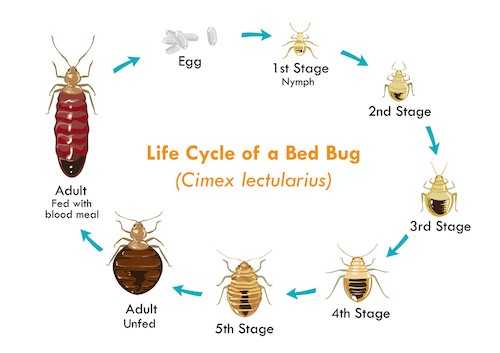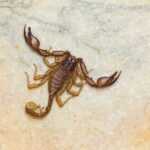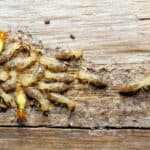We talk a lot about how NOT to get bed bugs. By now you know to take precautions when traveling – ask hotels before booking if they’ve had a history with bed bugs, check for signs of bed bugs after check in (around mattress edges most common), and don’t leave luggage or clothing sitting on beds that aren’t your own. You also know it’s not a great idea to bring your luggage into your home right after a trip. Instead, leave in your garage and wash all the clothing before bringing inside, if possible. Store suitcases in an outdoor closet if available. Even if you’ve done all of the above, bed bugs are great travelers and CAN find their way into your home – maybe in that second-hand piece of furniture you recently purchased, from overnight house guests’ luggage, or even your kids returning home from college with a few extra “friends”. Bed bugs are made to survive in the most extreme conditions, making it hard to get rid of them once they’re in your home.
Finding and identifying bed bugs doesn’t have to be hard, though. Typically they like to live only a few feet away from their food source – any living person or pet in your home.
If you want to find out more about our bed bug treatment in Las Vegas, visit our relevant services page.
Life Cycle of a Bed Bug
So… With bed bugs, as the name suggests, most likely you’ll find them in and around your bed. So how will you know when you have bed bugs? The most obvious sign is bites. You may see them on your skin or experience itchiness. Or you may not feel or see bites at all. In this case, bed bug infestations can worsen since you don’t know they’re there until it’s too late. To avoid this, check for bed bugs often. When changing bedding, check for signs – dark spots (fecal matter) on mattresses, box springs, pillows, on bed skirts, and headboards. You may also see bed bugs if you’re heavily infested, in any of their life stages – from eggs to nymphs to adults. In the adult stage, bed bugs are relatively flat, small, round, and a reddish brown color (this coloring is darker after a feeding). You can see the different life stages of bed bugs in the photo below.

So now what? While it may be hard to stomach, continue sleeping in your bed until the bed bugs have been eliminated. Moving to other areas of your home, such as a guest bedroom or the sofa, could cause the bed bugs to travel with you and infest other areas. If you want to change your bedding, wash everything in hot water. Bed Bugs can’t survive in extremely hot conditions so this will kill any hiding out in pillows, comforters, etc. While some exterminators may suggest otherwise, it’s usually best to leave everything else as is until you’ve had a professional inspection. Again, you don’t want the bed bugs to migrate to other areas of the house.
The average cost to treat a 3 bedroom home is typically around $2,000 to $4,000. That doesn’t include the cost of replacing infested furniture or bedding. Homeowners insurance DOES NOT cover Bed Bugs so you will be left holding the bag on this one. The best thing you can do to protect your home and belongings is to have our Bed Bug Assurance Program. For less than .25 cents a day you can have the peace of mind that if Bed Bugs are found in your home you are covered.




